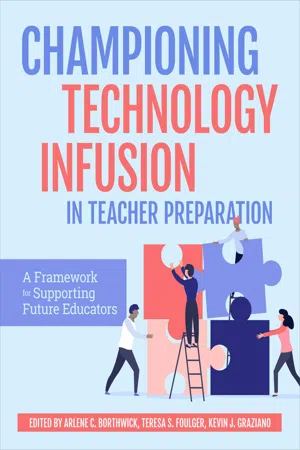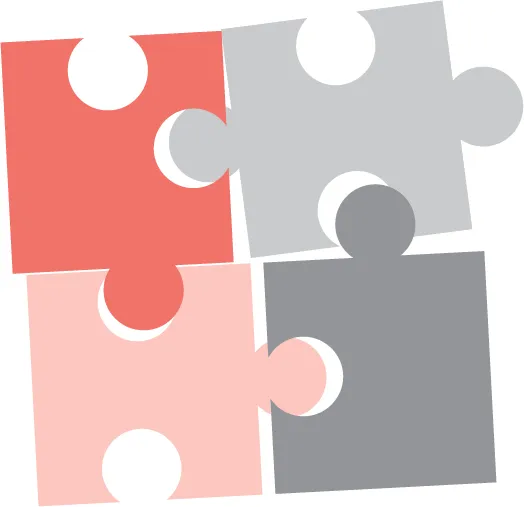CHAPTER 4
Frameworks That Scaffold Learning to Teach with Technology
LIZ KOLB
UNIVERSITY OF MICHIGAN
Overview
This chapter describes four frameworks in educational technology—SAMR, PICRAT, TIM, and Triple E—and proposes how each might be used as a scaffold in teacher preparation programs for teacher candidates who are learning how to teach with technology. This chapter calls on teacher educators to use the frameworks as tools to support teacher candidates in improving their effectiveness in integrating technology into their teaching. Recommendations are provided for which framework to use during various phases of teacher preparation.
Scenario: Modeling Technology in a Math Methods Course
Recently, a field supervisor was observing a teacher candidate teaching a lesson to a classroom of second grade students. The teacher candidate wanted to demonstrate how technology could be integrated to address mathematics standards. The math objective for the lesson was telling time on a dial clock. In her attempt to demonstrate the use of technology to scaffold content learning, the teacher candidate integrated Spheros (www.sphero.com), small robotic balls that can be programmed to move by using an application on an iPad. The students were placed in a small group, were provided two Sphero balls, and asked to sit near one of the floor mats. Each floor mat had a “dial clock” face painted on it. Students were asked to take turns using the iPad to program the Sphero balls to “tell time.” The teacher candidate explained to the second-graders that one ball was to represent where the hour hand would be on a dial clock and the other ball was to represent where the minute hand would be on a dial clock. The teacher candidate asked the second-graders to take turns programming the Spheros to roll to the proper spots that would represent 2:00 p.m. on the floor mat.
• How can I support teacher candidates to make informed decisions about when to use technology?
• What scaffolds might I use to provide insight for teacher candidates about the added value technology can bring to content-based learning?
• How can I better frame and discuss technology with teacher candidates after a field observation?
Why Learning How and When to Teach with Technology Is Complicated
As noted in the scenario above, learning to effectively use technology in teaching is not a simple endeavor. It involves simultaneously thinking about technological choices, curriculum goals, and pedagogical opportunities. Technological Pedagogical and Content Knowledge (TPACK) is a conceptual framework commonly used to depict the nature of teaching with technology (Mishra & Koehler, 2006). The framework originated when scholars were discussing prior research by Shulman that defined how effective teachers must employ both content knowledge and pedagogical knowledge, commonly referred to as pedagogical content knowledge (Shulman, 1986). Expanding upon Schulman’s work, Mishra and Koehler (2006) positioned technology as an equally important and integral knowledge base to form technological pedagogical content knowledge (TPACK). TPACK emphasizes how these three knowledge bases—technological knowledge (TK), pedagogical knowledge (PK), and content knowledge (CK)—interrelate with one another. The framework also includes a heightened emphasis on teachers’ contextual knowledge (XK) when technology is used in their teaching (Mishra, 2019). Applying these knowledge bases within the practice of real-life teaching situations is a challenge for teacher educators as they think about how to best scaffold teacher candidates to account for the unique context of a school and community. In order for a teacher preparation program to effectively infuse technology throughout all coursework, all the knowledge bases (CK, PK, TK, and XK), as well as how they influence one another, should be seamlessly woven into preparation program curriculum. See Figure 4.1 for an illustration of TPACK.
Four Frameworks to Help Teacher Educators Scaffold Teacher Candidates Learning to Teach with Technology
What follows are four frameworks that can be used by teacher educators and those individuals who work with teacher candidates to support the development of candidates’ TPACK. The four frameworks are not an exhaustive list but were selected because they are aligned to and draw on the power of TPACK. Each framework has the ability to provide teacher candidates a way to evaluate and inform instructional tool choices that are supported with research. Because the frameworks have unique affordances and limitations, employing a selection of frameworks will help teacher educators personalize the support they provide teacher candidates.
SAMR
The first framework teacher educators might use as a scaffold with their teacher candidates is the Substitution, Augmentation, Modification, and Redefinition model (SAMR) developed by Puentedura (2013). SAMR is based on four classifications of technology use in the classroom: substitution, augmentation, modification, and redefinition. See Figure 4.2 for an illustration of SAMR. At the substitution classification, students use technology to substitute for a traditional learning activity. As an example, when students write and edit a story using pencil and paper and then type their final stories in Microsoft Word (without using any editing features in Word), they are substituting word processing for handwritten work. At the augmentation classification, students use technology to substitute a traditional learning activity, and the substitution provides added value over the traditional method. As an example, students use Word to draft a story and are expected to use the editing features of Word such as spellchecker and grammar check. At the modification classification, students use technology to modify a traditional learning activity in a way that would change what or how it is produced. As an example, students use Word to type a story with embedded links to web-based media, additional resources, and references, making the story interactive for the reader. At the redefinition classification, the traditional learning task is completely changed by the technology tool. As an example, small groups of students work collaboratively in Google Docs to create a script for a podcast that will be shared via a web-based archive with a targeted audience. According to SAMR, learning activities that fall within the classifications of substitution and augmentation apply technology in ways that enhance learning, while learning activities that fall within the classifications of modification and redefinition transform learning (Puentedura, 2013).
Analyzing the Sphero Lesson Using...






